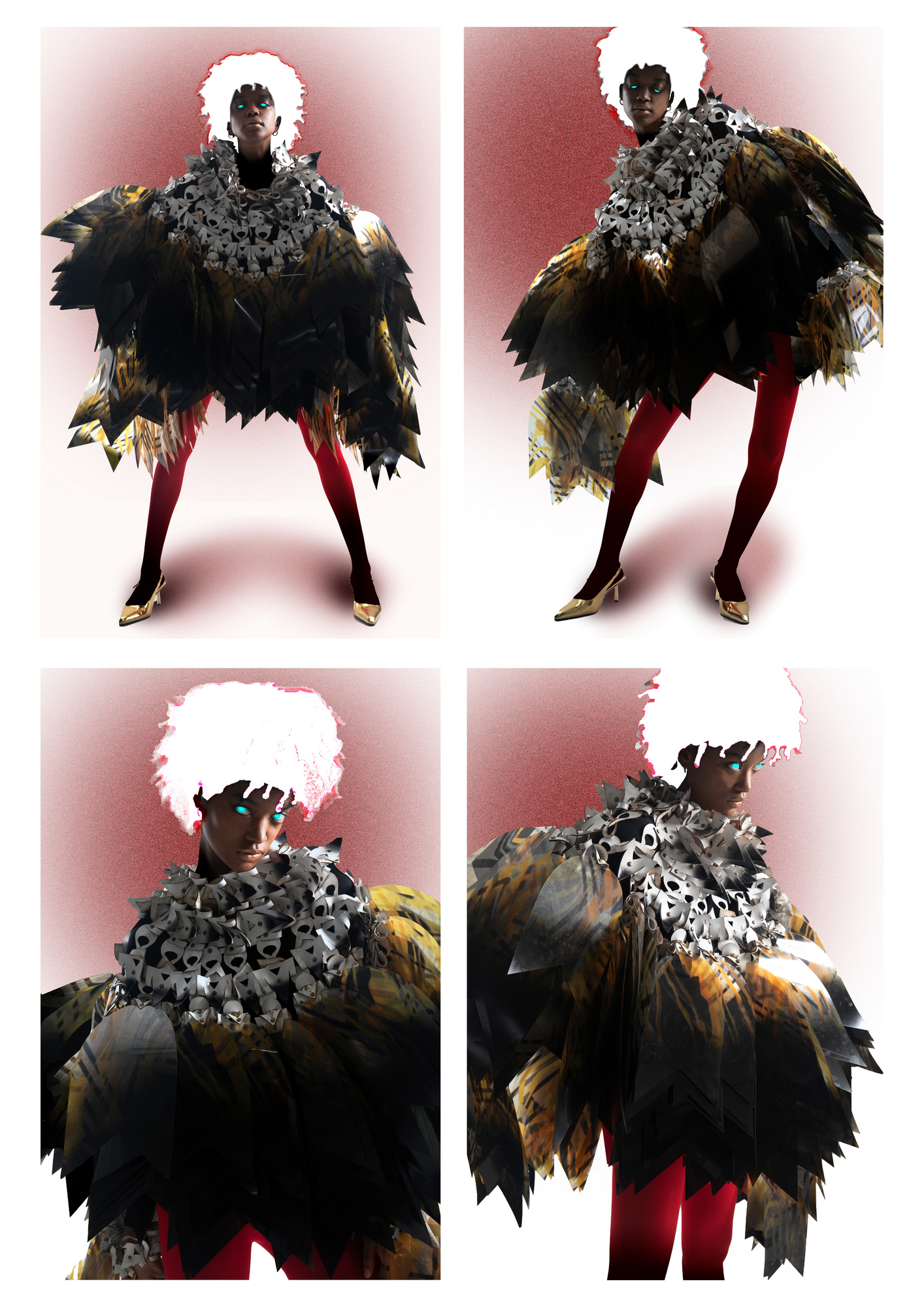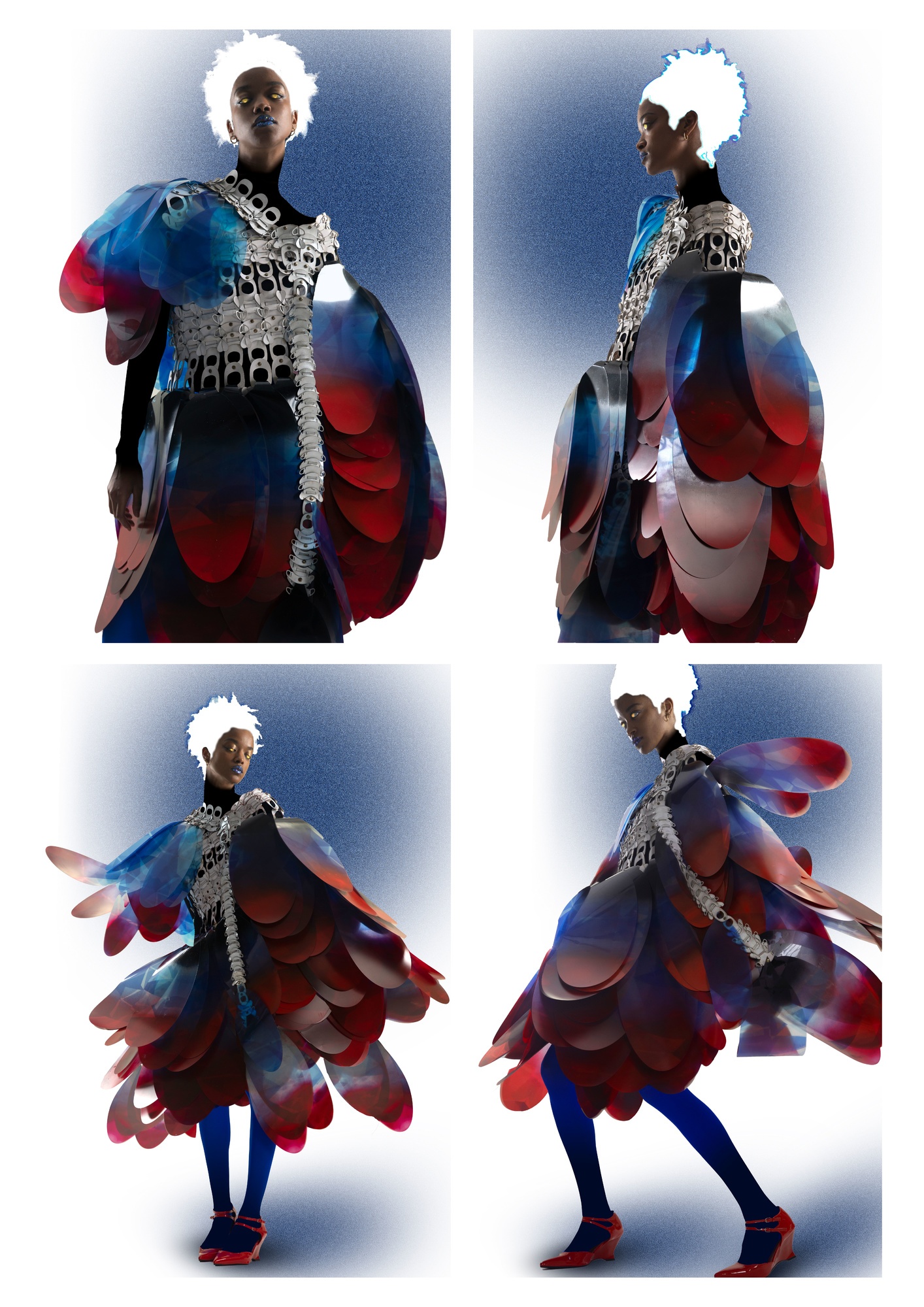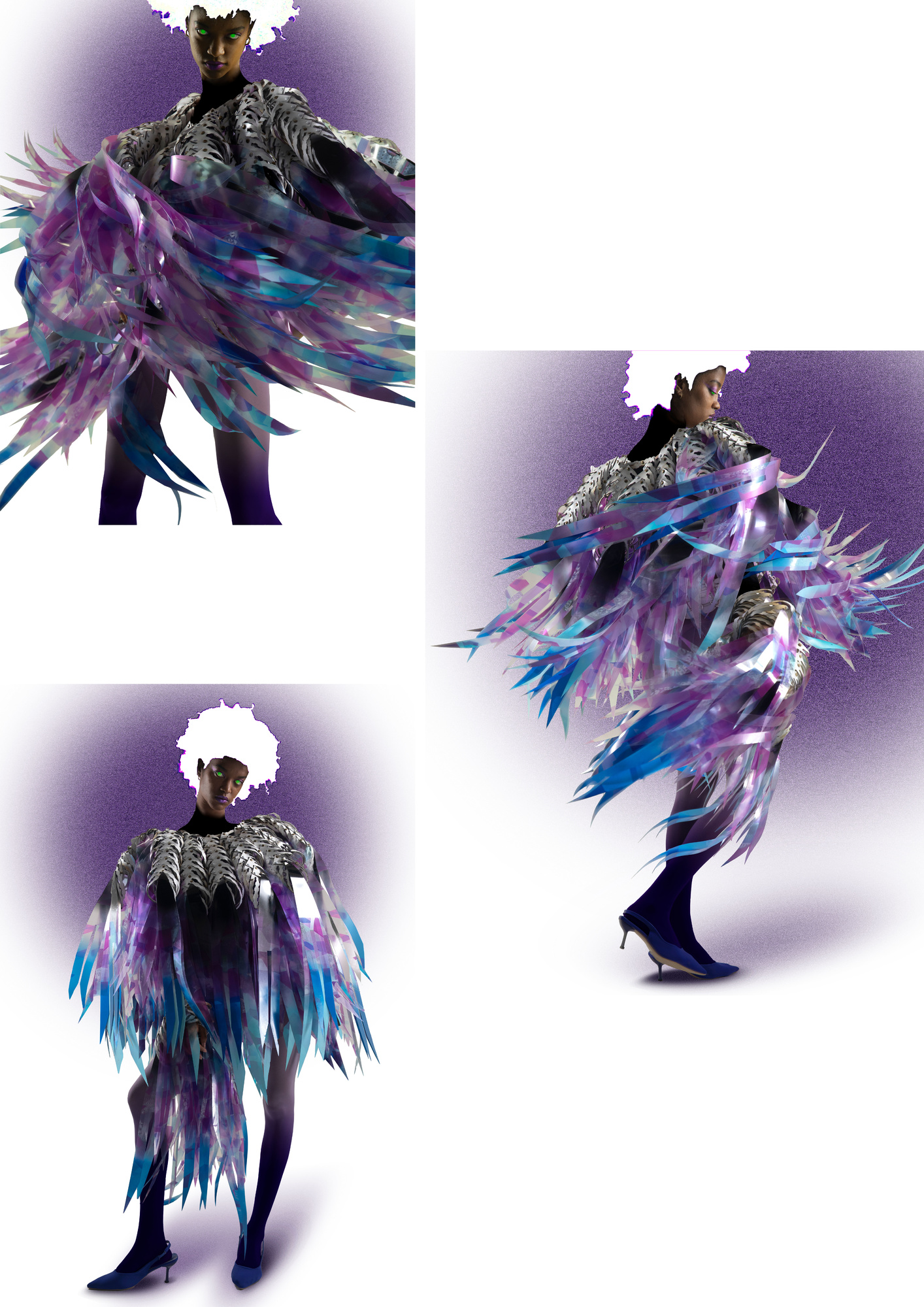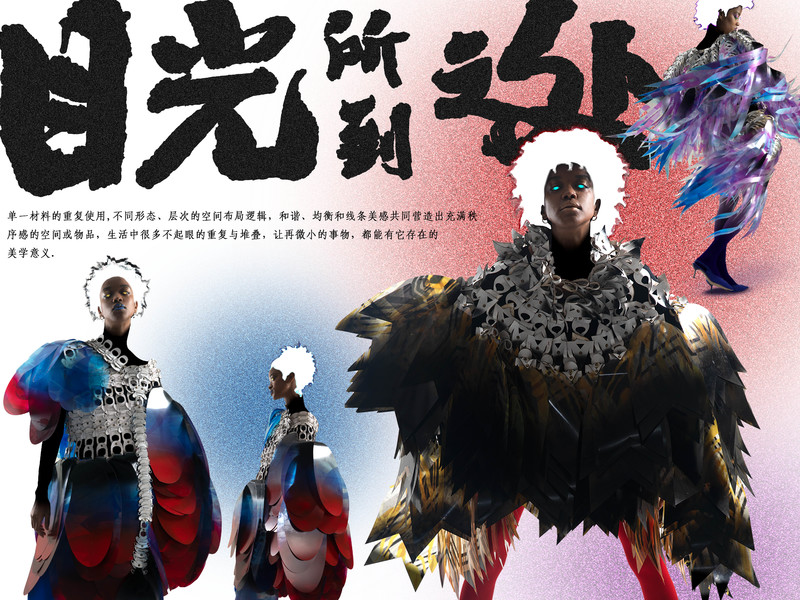
LOOK 1

LOOK 2

LOOK 3
Wherever you look (source of inspiration/development process, etc.)
neatly folded paper, soft checkered clothing woven pieces... the repeated use of a single material, different forms, levels of space layout logic, harmony, balance and line beauty together to create a sense of order of space or goods, life a lot of inconspicuous repetition and stacking, so that even the smallest things, can have its aesthetic significance, I extract their "cycle unit", to design deformation, in the form of modular design stitching, the output of three sets of wearable accessories.
In this creation, modular design thinking is used as a structural framework to re-examine and transform simple objects and phenomena in daily life. The core concept of modular design is to build a complex system through standardized, repeatable and flexible combination of units. I extracted the "circular unit" from everyday objects. After design transformation, seemingly ordinary elements have been refined and reconstructed to become accessories with functional and artistic value. This design method gives these items a new form, so that they have more performance dimensions and application space on the basis of maintaining the original aesthetics.
Chinese design emphasizes the refinement of details and the symmetrical beauty of form, and traditional handicrafts such as origami, weaving and embroidery show the aesthetic order created by repetition and lamination in structure. The modular design echoes the balance between rigor and flexibility in structure and form in traditional Chinese art through the repetition and combination of standardized units. Especially in the use of everyday materials such as fabrics and paper, we can see the influence of traditional technology in creating visual beauty and practicality. My works reconstruct these traditional craft elements in this way, not only retaining their historical and cultural value, but also giving them new forms and functions, making them more dynamic in modern society.
And driven by the social environment, the attention to environmental protection and sustainable development is gradually strengthened. I think the modular design concept reflects this social trend. The modular design itself can maximize the service life of the product and avoid the waste of resources, which is in line with the current society's high attention to environmental protection and sustainable development. This design method can not only reduce the dependence on raw materials, but also meet the personalized and diversified needs of consumers through the ever-changing combination of forms, so as to respond to the social demand for functionality, environmental protection and flexibility. As an environmental protection design idea, modular design has a strong value of the times. Through the dismantling and reconstruction of goods, modular design can effectively reduce the waste of resources and promote the transmission of environmental awareness. I not only want to focus on the reuse of materials, but also want to maximize the service life of the product through modular design.
MiMi (xing qianwen), a textile designer, was born in Jiaozuo, Henan Province in 2001. He graduated from Beijing Institute of Fashion Technology with a bachelor's degree and is about to study at the Royal College of Art. He now lives and works in Beijing. His works involve installation, performance, material art, etc. He is a designer who is committed to integrating comprehensive materials into clothing/apparel and bringing innovative fabrics into fashion.



















